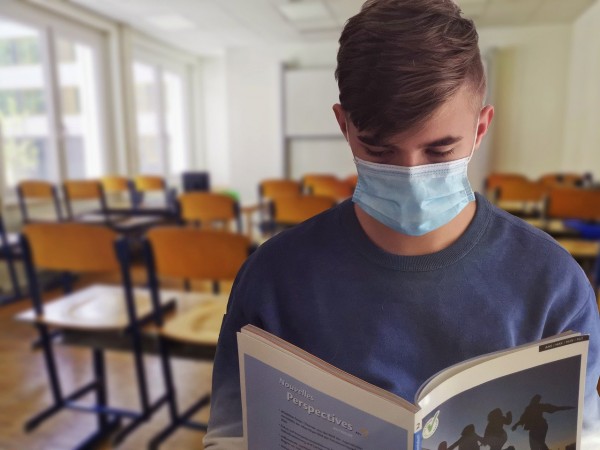'Mask Associated Dry Eye' Complaints Arise Amid Mandated Face Masks

As the whole world struggles to adapt to the changing effects of COVID-19 on our daily lives, the wearing of face mask has become the new normal.
World Health Organization (WHO) has recommended the use of face masks to suppress disease transmission and help save lives.
With face masks becoming an essential part of our daily lives, researchers from the Centre for Ocular Research and Education (CORE) at the University of Waterloo, Ontario, Canada, have seen an increase in the reports of people experiencing dry-eye symptoms and irritated eyes. This has been described as a mask-associated dry eye, or MADE, for short.
Dr. Lyndon Jones, director of CORE, stressed the importance of the public to continue wearing face masks even if encountering eye dryness.
LOOK: Researchers Reveal How a Keto Diet Could Help Reduce Alzheimer-Causing Fungi in the Gut
Because the face mask sits loosely on the face, exhaled air escapes through the top of the mask and into one's eyes. This accelerates tear film evaporation, leading to the formation of dry spots on the ocular surface leading to eye discomfort. It also causes eye inflammation and increases oxidative stress.
This will not only increase dry eye symptoms but for people who already have pre-existing eye conditions, wearing of face mask can cause a worsening of symptoms. The elderly who has decreased tear film production, as well as people who wear contact lenses or work in air-conditioned spaces while continually looking at computer screens, may experience more symptoms of dry eyes.
Symptoms of dry eye may lead people to rub their eyes for temporary relief at a time when face-touching is not advisable.
Guidelines to Mitigate MADE
The researchers at CORE are advising medical practitioners to incorporate actions and questions about MADE during a routine examination of patients. Clinics should be able to recognize and mitigate mask-associated dry eye in the early stages so that it can lead to better management and prevent patients from being discouraged from wearing masks.
Some guidelines were put together to address MADE. This includes:
- Proper wearing of a close-fitted mask with a carefully-taped top edge to prevent interference with blinking. When the face mask is worn correctly, it helps direct airflow downwards, thereby reducing eye irritation.
- It will also be beneficial to apply lubricating drops as recommended by your eye care practitioner.
- Taking periodic breaks from staring into digital devices can also prevent eye strain and MADE.
- Adding a humidifier to your space can increase moisture in the eye and help relieve eye discomfort.
- Eating foods rich in omega-3 fatty acids may help, as this fat is known to reduce inflammation in the body.
- Stay away from cigarette smoke as this smoke can further irritate dry eyes.
- Use a warm compress and wash your eyelids to help release oils in your eyelid glands and promote the production of tears.
Although it might be tempting to ditch the mask to reduce this kind of eye discomfort, Dr. Jones is adamant that MADE should not be an excuse to support anti-mask-wearing sentiments.
Responsibly wearing a face mask is still critical to overcoming the pandemic.
FIND OUT MORE: Blood pressure medication does not cause more falls
Sep 03, 2020 09:00 AM EDT




